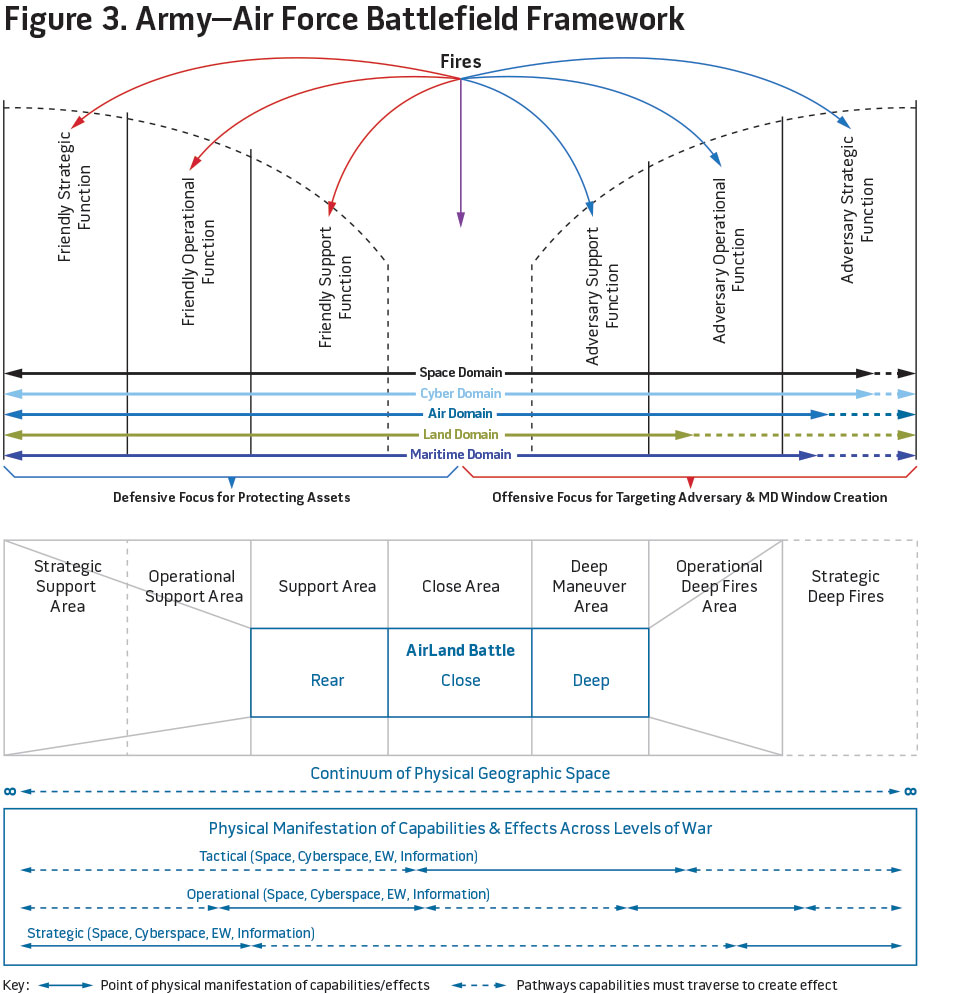In the latest issue of Joint Forces Quarterly, General David G. Perkins and General James M. Holmes, respectively the commanding generals of U.S. Army Training and Doctrine Command (TRADOC) and U.S. Air Force Air Combat Command (ACC), present the results of the initial effort to fashion a unified, joint understanding of the multidomain battle (MDB) battlespace.
The thinking of the services proceeds from a basic idea:
Victory in future combat will be determined by how successfully commanders can understand, visualize, and describe the battlefield to their subordinate commands, thus allowing for more rapid decisionmaking to exploit the initiative and create positions of relative advantage.
In order to create this common understanding, TRADOC and ACC are seeking to blend the conceptualization of their respective operating concepts.
The Army’s…operational framework is a cognitive tool used to assist commanders and staffs in clearly visualizing and describing the application of combat power in time, space, and purpose… The Army’s operational and battlefield framework is, by the reality and physics of the land domain, generally geographically focused and employed in multiple echelons.
The mission of the Air Force is to fly, fight, and win—in air, space, and cyberspace. With this in mind, and with the inherent flexibility provided by the range and speed of air, space, and cyber power, the ACC construct for visualizing and describing operations in time and space has developed differently from the Army’s… One key difference between the two constructs is that while the Army’s is based on physical location of friendly and enemy assets and systems, ACC’s is typically focused more on the functions conducted by friendly and enemy assets and systems. Focusing on the functions conducted by friendly and enemy forces allows coordinated employment and integration of air, space, and cyber effects in the battlespace to protect or exploit friendly functions while degrading or defeating enemy functions across geographic boundaries to create and exploit enemy vulnerabilities and achieve a continuing advantage.
Despite having “somewhat differing perspectives on mission command versus C2 and on a battlefield framework that is oriented on forces and geography versus one that is oriented on function and time,” it turns out that the services’ respective conceptualizations of their operating concepts are not incompatible. The first cut on an integrated concept yielded the diagram above. As Perkins and Holmes point out,
The only noncommon area between these two frameworks is the Air Force’s Adversary Strategic area. This area could easily be accommodated into the Army’s existing framework with the addition of Strategic Deep Fires—an area over the horizon beyond the range of land-based systems, thus requiring cross-domain fires from the sea, air, and space.
Perkins and Holmes go on to map out the next steps.
In the coming year, the Army and Air Force will be conducting a series of experiments and initiatives to help determine the essential components of MDB C2. Between the Services there is a common understanding of the future operational environment, the macro-level problems that must be addressed, and the capability gaps that currently exist. Potential solutions require us to ask questions differently, to ask different questions, and in many cases to change our definitions.
Their expectation is that “Frameworks will tend to merge—not as an either/or binary choice—but as a realization that effective cross-domain operations on the land and sea, in the air, as well as cyber and electromagnetic domains will require a merged framework and a common operating picture.”
So far, so good. Stay tuned.

